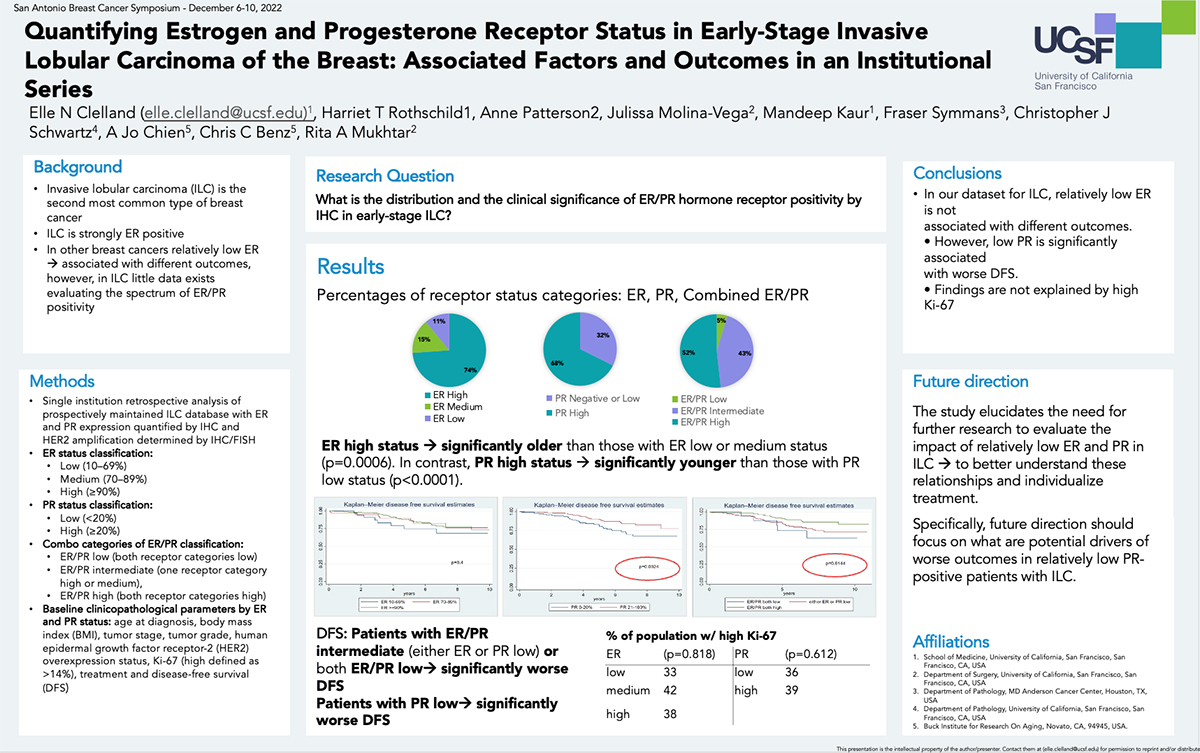Quantifying Estrogen and Progesterone Receptor Status in Early-Stage Invasive Lobular Carcinoma of the Breast: Associated Factors and Outcomes in an Institutional Series
We are interested in understanding the distribution and the clinical significance of ER/PR hormone receptor positivity in early-stage ILC. Overall, we know that ILC is typically regarded as strongly ER and PR positive and there is very little data that exists evaluating the spectrum of hormone receptor positivity in ILC. Using a single institution prospectively maintained ILC database, we evaluated patient characteristics, tumor features, and disease-free survival of patients based on different levels of ER and PR receptor positivity.
Percentages of hormone receptor positivity are defined from immunohistochemical staining. ER status classification was defined as low (10šC69%), medium (70šC89%), and high (¡Ý90%). PR status classification was defined as low (<20%) and high (¡Ý20%). Combo categories of ER/PR classification were defined as ER/PR low (both receptor categories low), ER/PR intermediate (one receptor category high or medium), ER/PR high (both receptor categories high)].
Overall, we found that patients with either ER/PR low, or ER/PR intermediate had significantly worse disease-free survival. Looking at PR and ER separately, patients with PR low had significantly worse disease-free survival but there was no statistically significant difference in disease-free survival comparing ER low, ER medium, and ER high. ER high cases were significantly older whereas PR high cases were significantly younger. Given these results, we wondered if the worse disease-free survival in the PR low cases were possibly reflecting cases with a luminal b subtype, however, our findings were not associated with differences in ki-67. This study highlights the need for further research looking at the spectrum of ER and PR receptor positivity and further work should aim to better understand potential drivers of worse outcomes in the PR low cases.

